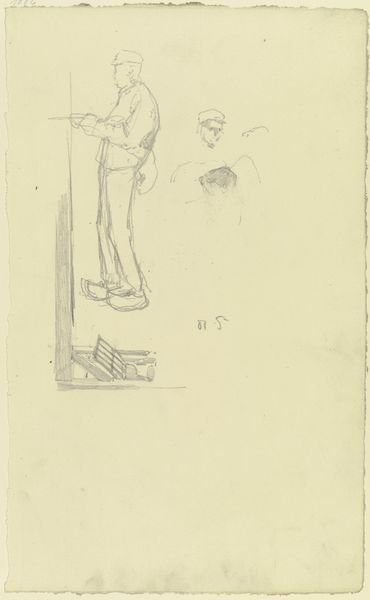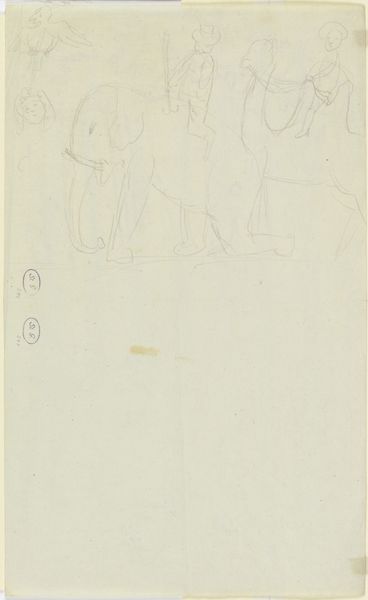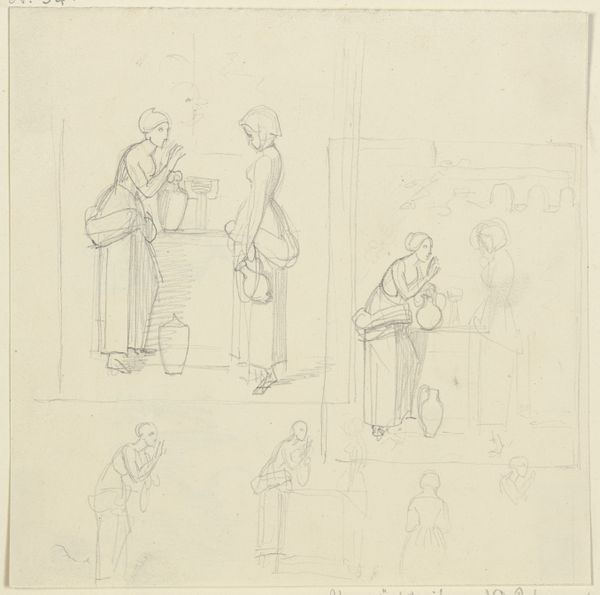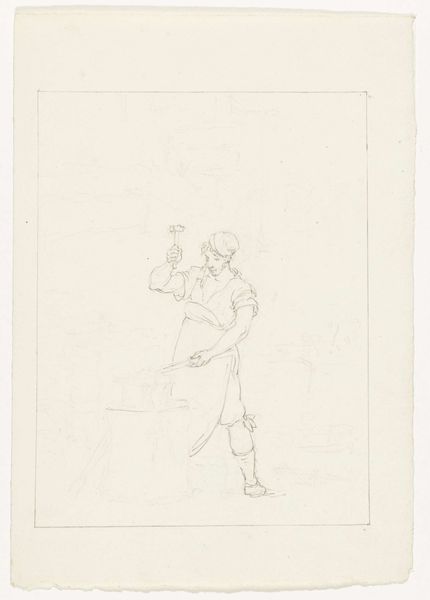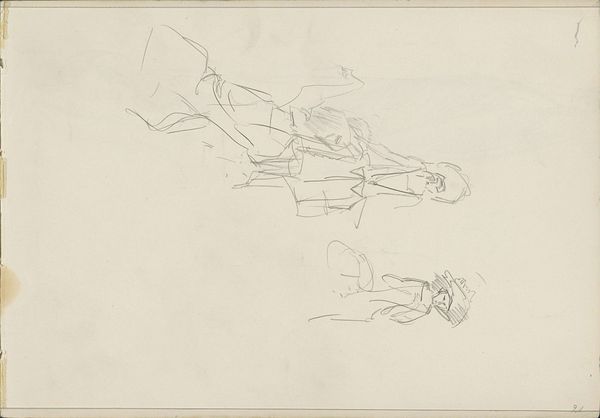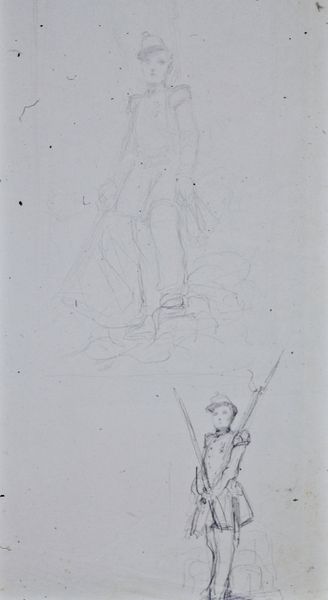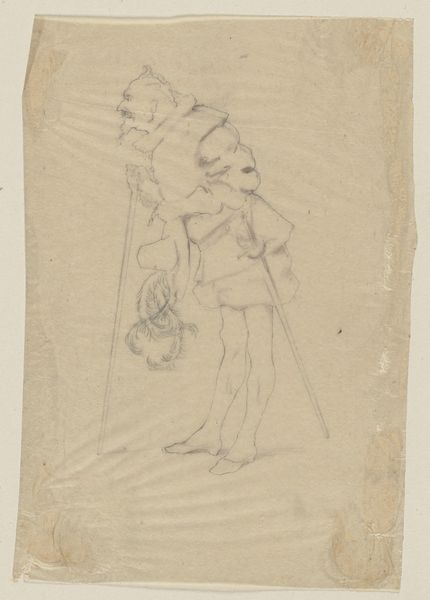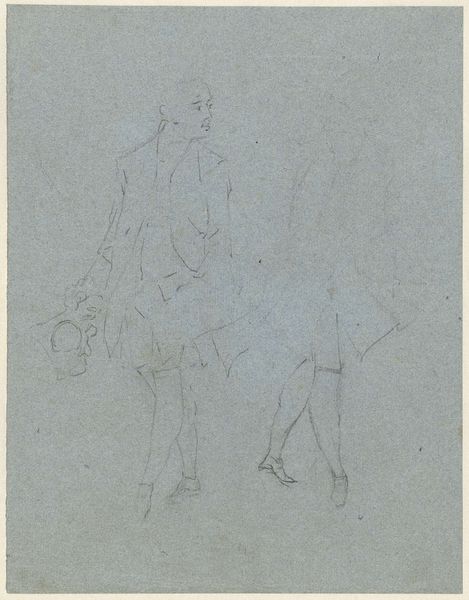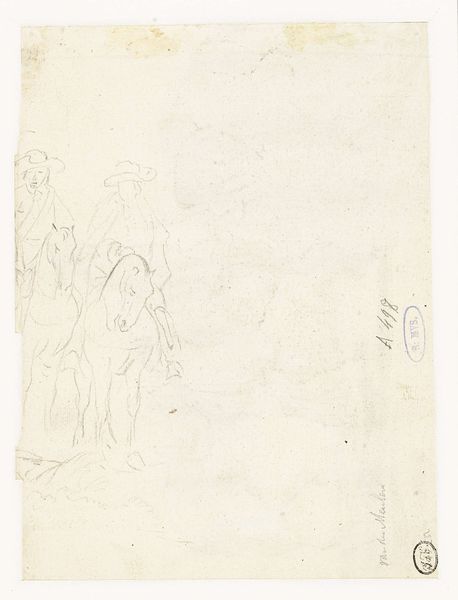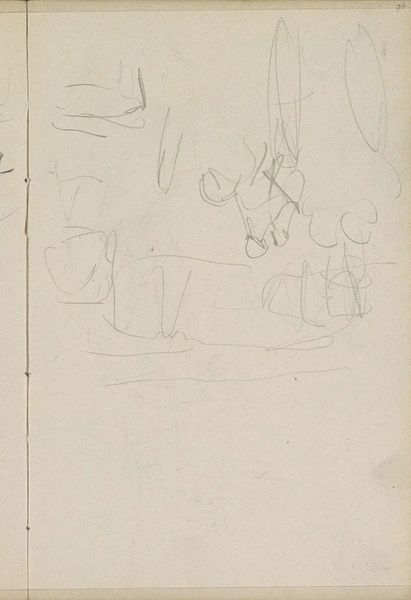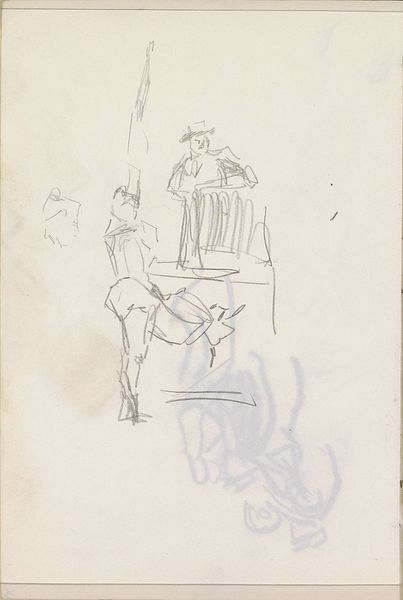
Illustrationsudkast til H.C. Andersen, Peiter, Peter og Peer 1866 - 1870
0:00
0:00
drawing, pencil, pen
#
drawing
#
ink drawing
#
narrative-art
#
pen sketch
#
figuration
#
pencil
#
pen
Dimensions: 111 mm (height) x 94 mm (width) (bladmaal)
Curator: This intriguing pen and pencil sketch is titled "Illustrationsudkast til H.C. Andersen, Peiter, Peter og Peer" by Lorenz Frølich, created between 1866 and 1870. Editor: My first thought? It’s ephemeral. Fleeting. Like catching a glimpse of a memory. The faint lines give it a sense of unfinished narrative and fragile social interactions. Curator: Indeed. Frølich was deeply involved in illustrating Nordic mythology and fairytales. Andersen’s stories, of course, were enormously popular. It is part of a fascinating body of work within 19th-century Danish illustration traditions and reflects Andersen's influence in Danish society at the time. Editor: Exactly. The characters almost float within the frame, without much substance—literally rendered through thin lines. Their posture betrays a certain upper-class, almost performative, social code. I'm immediately drawn to the dynamics and the hidden hierarchies between these figures, rendered in such a starkly simple way. Who holds power in this interaction, and what is that power built upon? Curator: These draft-like sketches also tell a lot about the artistic process. Here, the narrative isn't set in stone. It is up for debate and exploration. It reflects, for me, a tension between national romanticism, realism, and a bourgeoning sense of the social space through narrative illustration. Editor: Agreed. And that artistic decision opens avenues for discussion. It forces viewers to project their interpretations onto the figures. They become malleable symbols, easily fitting into a discussion around power, class, and social identities, even today. I would suggest this element allows an intersectional understanding. Curator: Looking closer, we can clearly see how the artist revised lines, experimenting with positions and expressions. The sketch as a format becomes a playground of imagination and artistic choice in a broader art historical scope. Editor: A testament to the stories we tell ourselves, constantly rewritten and reinterpreted across generations. The act of looking at the sketch then, turns into a questioning of the tales, and those in power that perpetuate or negate the narrative over time. Curator: Yes, precisely. It leaves us pondering about the relationship between artist, story, and society then and now. Editor: Thank you. It has certainly prompted a reflection on how stories shape our understanding of the past and influence our present.
Comments
No comments
Be the first to comment and join the conversation on the ultimate creative platform.
